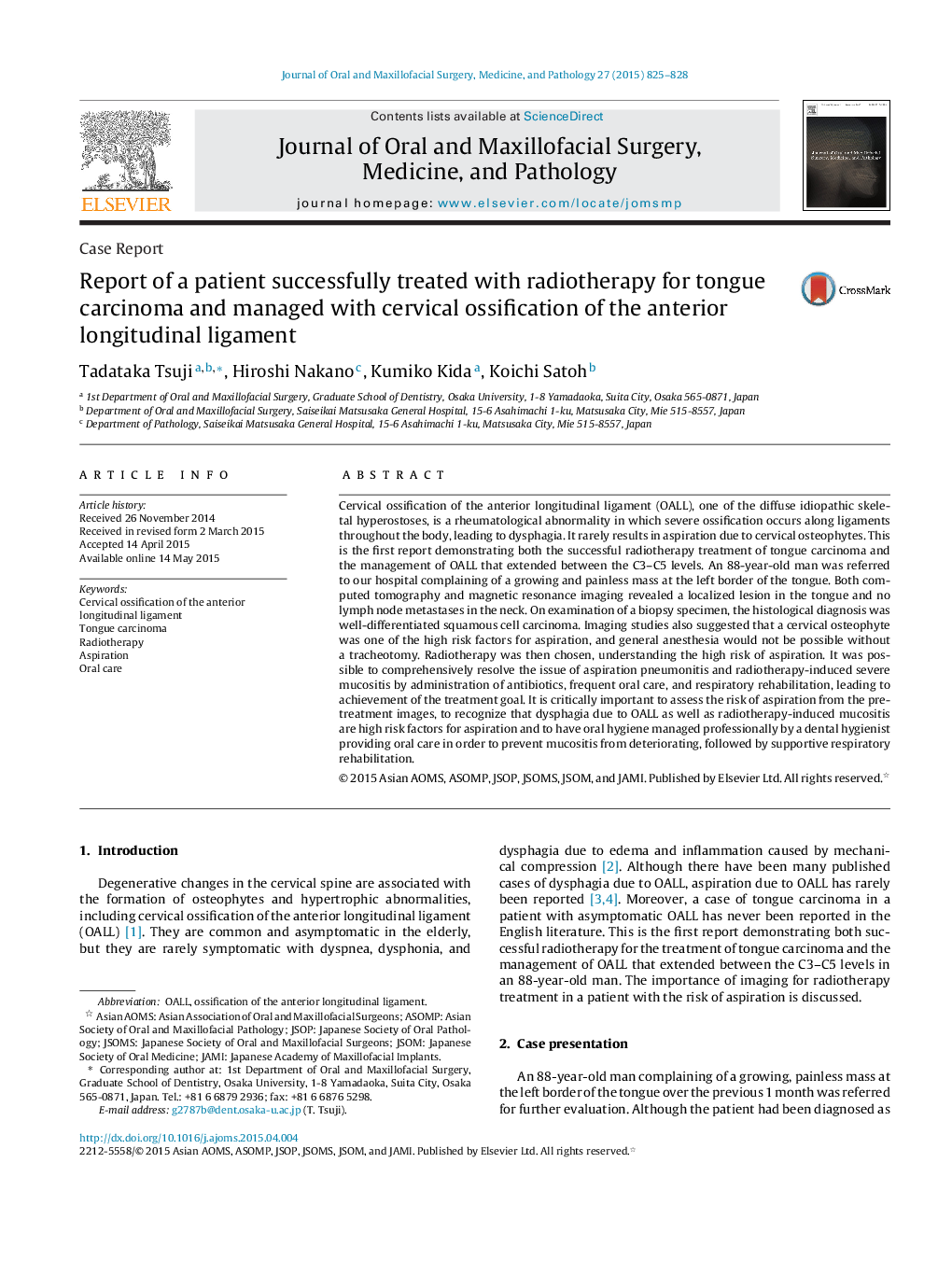| Article ID | Journal | Published Year | Pages | File Type |
|---|---|---|---|---|
| 3160390 | Journal of Oral and Maxillofacial Surgery, Medicine, and Pathology | 2015 | 4 Pages |
Cervical ossification of the anterior longitudinal ligament (OALL), one of the diffuse idiopathic skeletal hyperostoses, is a rheumatological abnormality in which severe ossification occurs along ligaments throughout the body, leading to dysphagia. It rarely results in aspiration due to cervical osteophytes. This is the first report demonstrating both the successful radiotherapy treatment of tongue carcinoma and the management of OALL that extended between the C3–C5 levels. An 88-year-old man was referred to our hospital complaining of a growing and painless mass at the left border of the tongue. Both computed tomography and magnetic resonance imaging revealed a localized lesion in the tongue and no lymph node metastases in the neck. On examination of a biopsy specimen, the histological diagnosis was well-differentiated squamous cell carcinoma. Imaging studies also suggested that a cervical osteophyte was one of the high risk factors for aspiration, and general anesthesia would not be possible without a tracheotomy. Radiotherapy was then chosen, understanding the high risk of aspiration. It was possible to comprehensively resolve the issue of aspiration pneumonitis and radiotherapy-induced severe mucositis by administration of antibiotics, frequent oral care, and respiratory rehabilitation, leading to achievement of the treatment goal. It is critically important to assess the risk of aspiration from the pretreatment images, to recognize that dysphagia due to OALL as well as radiotherapy-induced mucositis are high risk factors for aspiration and to have oral hygiene managed professionally by a dental hygienist providing oral care in order to prevent mucositis from deteriorating, followed by supportive respiratory rehabilitation.
